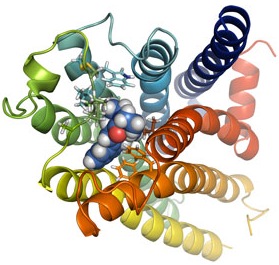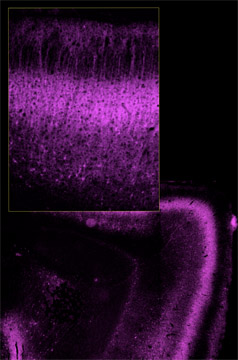
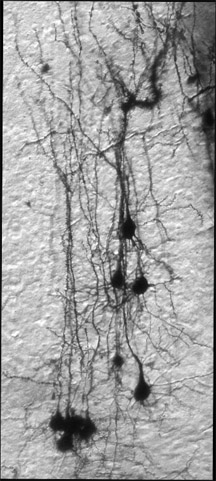
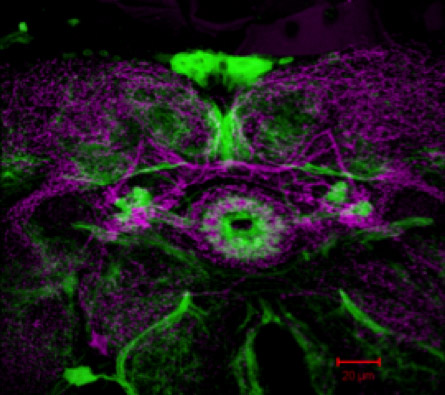
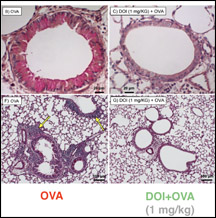
Dr. Nichols' Lab
Lab Members
Dr. Thomas Flanagan
Dr. Meghan Hibicke
Research
The research in my laboratory focuses on the neurotransmitter serotonin, and the molecular mechanisms underlying its behavioral and physiological effects, with an emphasis on the serotonin 5-HT2A receptor.
Serotonin (5-HT) in the brain modulates many complex behaviors including mood, cognition, appetite, sleep, aggression, memory, and sex. Serotonin in the periphery regulates many physiological processes including blood pressure, inflammation, cell division, and gut function.
Some of the most powerful tools to investigate the functional role of serotonin receptors, especially the 5-HT2A receptor, are what are commonly known as psychedelic drugs. Selective activation of the receptor with chemicals like lysergic acid diethylamide (LSD) are known to produce profound behavioral changes. These include hallucinations and detachment from reality, and are similar to those associated with certain psychiatric disorders like schizophrenia. My laboratory discovered that drugs of this class are extremely potent anti-inflammtories, and can block inflammation produced by TNF-alpha as well as prevent inflammation in models of human inflammatory diseases. Our focus on the investigation of the mechanism of action of this class of drug on both behaviors and physiological processes will provide critical insight into normal biological processes like cognition and abnormal processes including schizophrenia as well as for inflammatory-related diseases.
There are three main areas of research ongoing in my laboratory:
1. Elucidation of the mechanism of action of LSD in the mammalian brain to alter behaviors.
- We have recently found that only a small fraction of cells within the brain are directly responding to psychedelics. These include excitatory and inhibitory neurons, and astrocytes and glia. We have termed these the 'Trigger Population' and hypothesize that their activation is necessary for the behavioral effects induced by drug administration. Importantly, we believe that these cells are critical for normal brain and cognitive functions, and a greater understanding of their normal roles will lead to a greater understanding of mechanisms underlying cognition, and diseases like schizophrenia, and towards developing therapeutics to treat disease.
2. Determination of the role of 5-HT2A receptors to prevent inflammation.
- Activation with psychedelics produces extremely potent blockade of inflammation in
cell culture models, whole animals, and in models of human inflammatory diseases.
We believe that psychedelic drugs are activating the receptor differently than serotonin
to recruit anti-inflammatory pathways through functionally selective mechanisms. There
are currently two projects examing this:
- Structure function analysis in cell culture models examining functional selectivity in relation to signal transduction pathways
- Continuing studies in rodent models of inflammtory diseases like asthma, where we have demonstrated agonists potently prevent the development of allergic asthma.
3. Study of the neuropharmacology of serotonin in the fruit fly, Drosophila melanogaster.
- Over the past 20 years I have developed the fruit fly as a translational model to study serotonin neuropharmacology. I have established a role for serotonin receptors in learning and memory, aggression, courtship, and circadian behaviors, and have developed many genetic tools for the study of serotonin and its receptors in the fly. These have included GAL4 drivers, and translation of the DREADD system for selective activation or silencing of tissues and cells to the fly. Currently, we are examining the role of serotonin in the stimulant effects of drugs like methamphetamine and cocaine in Drosophila, and the brain circuitry underlying these drug's stimulant effects.
